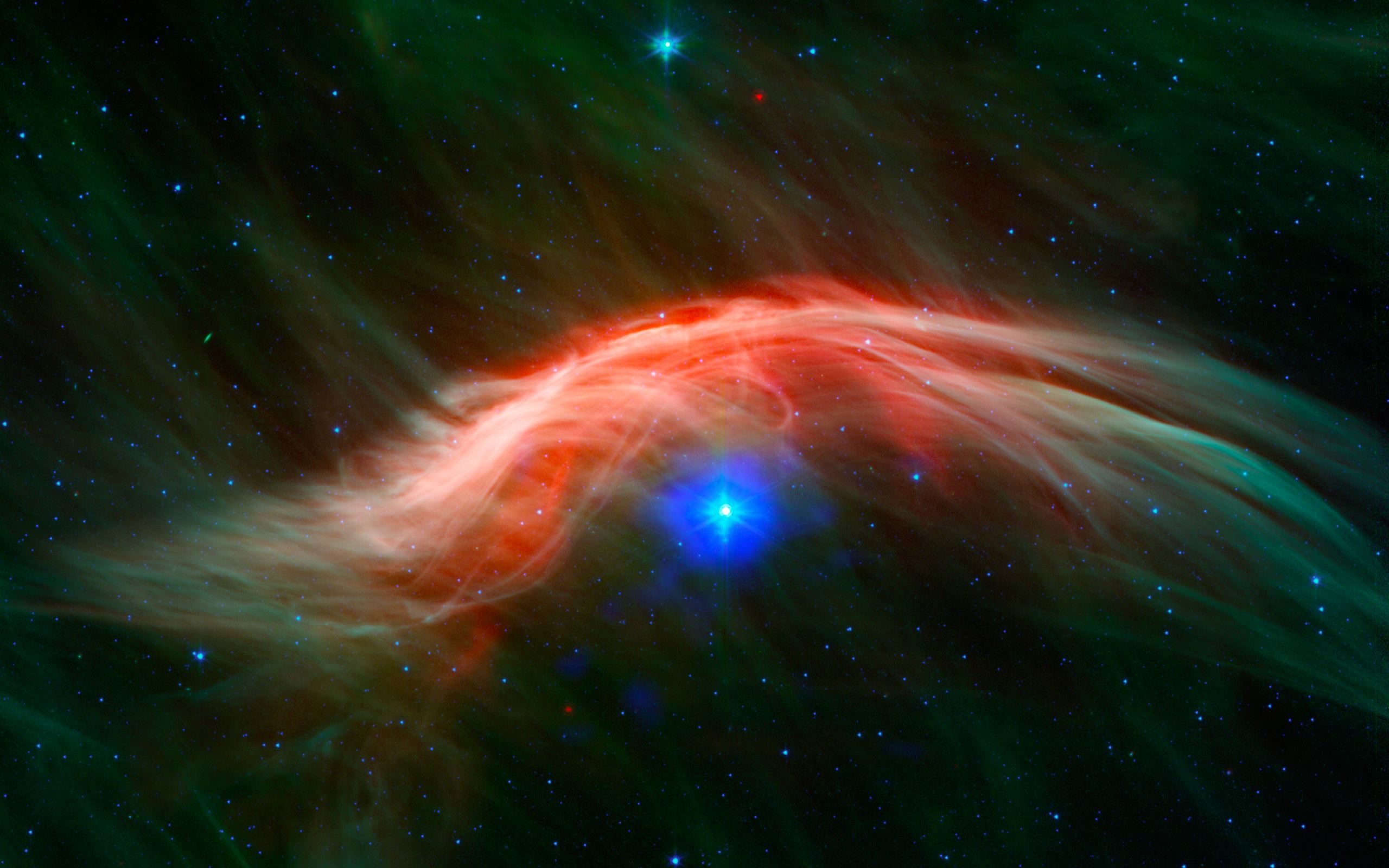

A multi-wavelength view of Zeta Ophiuchi. Credit: X-ray: NASA/CXC/Dublin Inst. Advanced Studies/S. Green et al.; Infrared: NASA/JPL/Spitzer
Zeta Ophiuchi has had an interesting life. It began as a typical large star about twenty times more massive than the Sun. It spent its days happily orbiting a large companion star until its companion exploded as a supernova about a million years ago. The explosion ejected Zeta Ophiuchi, so now it is speeding away through interstellar space. Of course, the supernova also expelled the outer layers of the companion star, so rather than empty space, our plucky star is speeding through the remnant gas as well. As they say on Facebook, it’s complicated. And that’s great news for astronomers, as a recent study shows.
Zeta Ophiuchi is most famous for beautiful images such as the one above. By plowing through interstellar gas, the star has created heated shock waves that glow in everything from infrared to x-rays. The physics of these shock waves is tremendously complex. It is governed by a set of mathematical equations known as magnetohydrodynamics, which describes the behavior of fluid gases and their surrounding magnetic fields. Modeling these equations is bad enough, but when you have turbulent motion such as shock waves, things get even worse. That’s why Zeta Ophiuchi is so important. Since we have such a great view of its shock wave, we can compare our observations with computer simulations.
In this latest study, the team created computer models simulating the shock wave near Zeta Ophiuchi. They then compared these models to observations in infrared, visible, and x-rays. Their goal is to determine which simulations are the most accurate so that the models can be further refined. Of their three models, two of them predicted that the brightest region of x-ray emissions should be at the edge of the shock wave closest to the star, and this is what we observe. But all three models also predicted that x-ray emissions should be fainter than we observe, so none of the models are fully accurate. But these models are difficult to do well, and this work is a good first start.
The difference in x-ray brightness is likely due to turbulent motion within the shock wave. The team plans on including some of this turbulent motion in future models. Through multiple iterations, they should be able to create a simulation that closely models this interstellar shock wave.
Magnetohydrodynamics is a central part of many astrophysical processes, ranging from solar flares to the formation of planets, to the powerful black hole engines of quasars. Most of these interactions are hidden by distance or dust, so it’s great that Zeta Ophiuchi can give astronomers a shocking view of this complex physics.
Reference: Green, S., et al. “Thermal emission from bow shocks II: 3D magnetohydrodynamic models of Zeta Ophiuchi.” arXiv preprint arXiv:2203.06331 (2022).
How can we explore Saturn’s moon, Enceladus, to include its surface and subsurface ocean, with…
Have you ever wondered how astronomers manage to map out the Milky Way when it's…
NASA astronomers have been continuing to monitor the trajectory of asteroid 2024 YR4. The initial…
Some exoplanets have characteristics totally alien to our Solar System. Hot Jupiters are one such…
Stars form in Giant Molecular Clouds (GMCs), vast clouds of mostly hydrogen that can span…
Let’s dive into one of those cosmic curiosities that's bound to blow your mind: how…